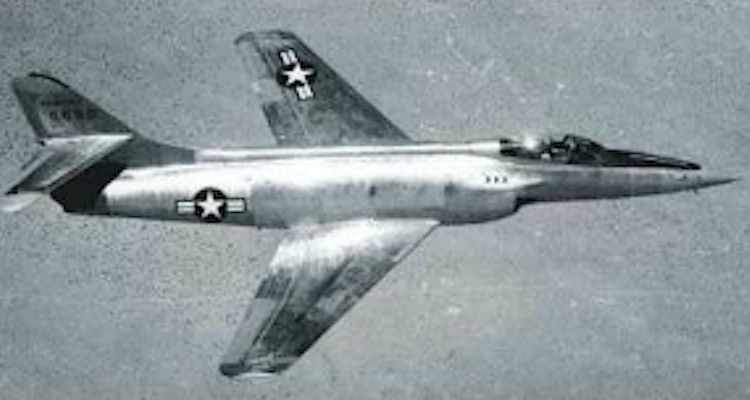At a time when most airplanes had props, Lockheed’s XF-90 had a pointy nose and swept wings. It looked ready to blast off for the moon. In 1946 the U.S. Air Force ordered two XP-90s, to compete with the XP-88 built by McDonnell and the XP-86C from North American. The “X” meant experimental, while the “P” for pursuit was changed to “F” for fighter in 1948. The competition was for a “penetration fighter” to fly strategic missions into the Soviet Union.
McDonnell’s entry was a superstar. The North American aircraft, redesignated XF-93, was a dud. The XF-90 performed somewhere between the two. Its 4,100-pound-thrust Westinghouse J34-WE-15 turbojet, like many early jet engines, proved disappointing. Even with two of them, the XF-90 rarely reached the 680 mph claimed in the brochure. When afterburners were added, the redesignated XF-90A was still inadequate, except as the personal jet of the airmen in the “Blackhawk” comic books.
Test pilot Tony LeVier made the first flight, on June 3, 1949. Then General Curtis LeMay, the new Strategic Air Command boss, shook up the Air Staff by opposing a new strategic fighter. A year later the Korean War changed Air Force requirements, so no penetration fighter was ever produced.
Two XF-90s conducted extensive flight tests long after the “century series” of more advanced jet fighters was well along in development. One XF-90 was scrapped. The other spent time as a ground target, to measure the results of atomic weapons during atmospheric tests. The National Museum of the U.S. Air Force plans to display the survivor in its new Cold War gallery.





